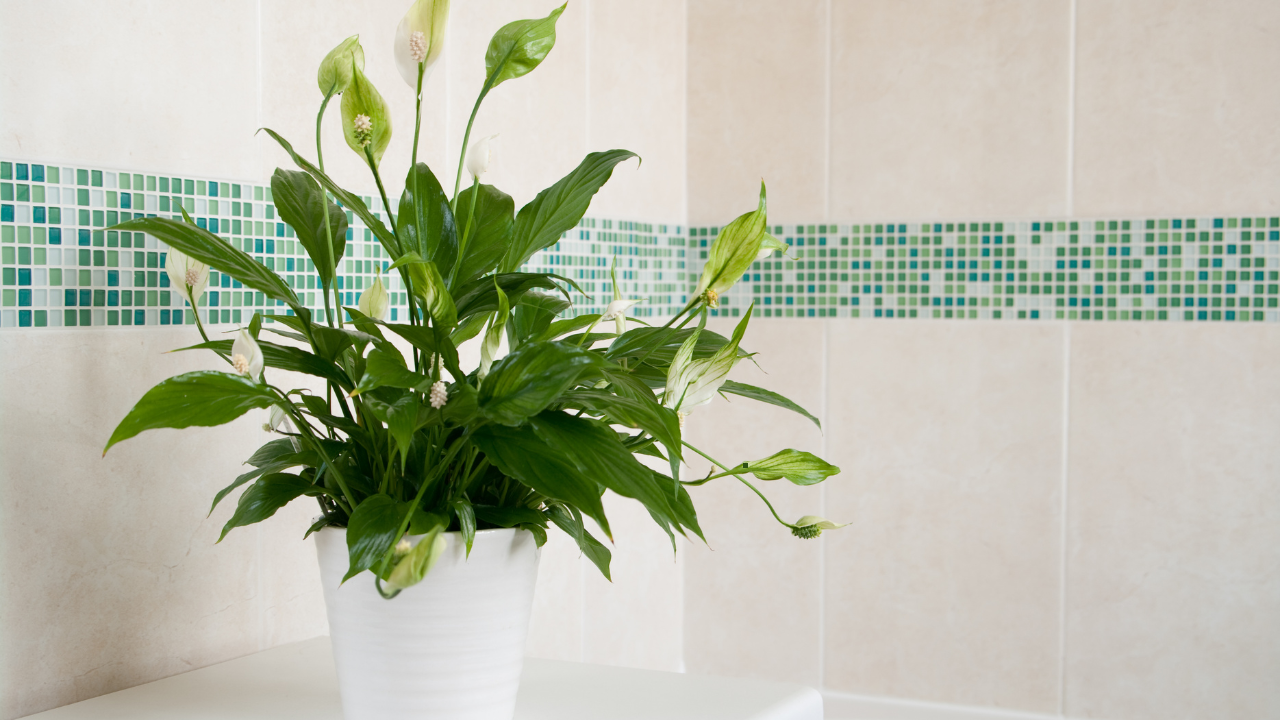The Peace Lily (Spathiphyllum) is a long time amorous house plant and quite rightly so. With its dark green shiny leaves and beautiful white flower like spathes, it has a little tropical repose wherever it is put indoors. The Peace Lily is known as a generally thirst-indicating plant with air-purifying properties and also a good plant to have as a starter plant or learning plant. Nevertheless, a bit of knowledge of its particular requirements goes a long way in order to make it appear at its best.
This is the final dos and donor to keeping the Peace Lily indoor plant blissfully happy.
1. The Kind of Light: The Right Place
Peace Lilies are oriented to the forest floor on the tropical lands where they get indirect sunlight that is shaded. This qualifies them to be used indoors perfectly.
- Perfect Place: Put your Peace Lily where it can get good indirect sunlight. A window facing east is usually ideal because the morning sun is not too intense as compared to that in the afternoon. It can be useful to put it a few feet in front of a south- or west-facing window as well.
- Symptoms of Wrong Light:
- To Much Direct Sun: The leaves will start to turn yellow and brown on the edges and be burned spots. Your plant is getting more than enough direct Sun. Relocate it to a shadier place.
- Not That Light: Although Peace Lilies can do well with low light and will live, they are not likely to flower well, at least not with the beautiful white flowers. Assess your plant to see whether it is blooming or whether it requires to be relocated to a sunny place.
2. Watering The Art of Knowing When to Water
Peace Lily is reputedly hysterical–when it wants a drink, it makes a point of letting you know it by wilting its leaves. This simplicity is good since it does not require much to take care of it but the trick here is to give it water regularly without excessive amounts.
- Watering Time: In order to conserve water, the best time to water is when the top inch of the soil dries off. You may determine the moisture with the help of your finger. Generally this may be once a week however, this depends on the size of the pot, the temperature, and the humidity in your house.
- Wilting Leaves: It is not a cause of panic when you notice the leaves drooping off. This is how your plant requests you to give it water. The main aspect that should normally make it perk up is a good watering.
- Watering Tips: Fill up your plant with water until it comes out of the bottom of the pot. There should always be all forms of excess water in the saucer removed so that the roots do not lie in wet soil that causes root rot.
- Water Quality: Peace Lilies may have problems with other chemicals in the water such as fluoride in tap water or in other water supplies and result in brown leaf tips. When it may be a problem, then filtered or distilled water can be used or a simple alternative is to leave tap water to stand over night so the chlorine can evaporate off.
3. Humidity and Temperature: Watering the Tropics
The Peace Lilies are tropical plants and they love warm moist conditions. The home environment can be the problem, more so during winters.
- Best Temperature: Grow your plant in a consistent condition with temperatures between 65-80°F (18-27°C). It is not advised to position it close to the cold draft that passes through the window or door or close to heating ducts as it can stress the plant.
- Humouth: You should increase the humidity around your plant to recreate the environment they are used to.
- Pebble Tray: Put the pot on a tray with some water and pebbles in it. The water which is evaporating will produce a humid microclimate around the plant.
- Misting: You can mist the leaves lightly every few days which helps, but is only temporary.
- Group Plants: Place your Peace Lily among some other plants, this will provide a humid atmosphere.
- Humid Rooms: Bathrooms and kitchens are usually rather humid and they could serve as ideal places to spot a Peace Lily.
4. Potting and Soil: Making the roots Happy
The selection of the proper soil and pot is essential to the well-being of your Peace Lily.
- Soil: Fill with a well-draining, all purpose potting mix that is rich in organic matter. This will resemble the rich, loose top soil of the forest floor and will enable it to be well aerated and hold a little water.
- Repotting: Peace Lilies are not fussy about being a bit pot-bound and they sometimes replicate their flowers best when the roots are cluttered a bit. You will get to know that it is time to repot when you see roots growing out of the drainage holes and/or when the plant starts to wilt more often in between waterings. A good season to repot is in the spring. The new pot should only be 1-2 inches larger than the existing one.
- Propagation: springtime repotting is also a good idea to propagate! To divide the plant, you can easily apply a little force by pulling the root ball of smaller clumps. And all that needs to happen is that each new clump is made up of more than a few leaves and a good root system.
5. Fertilizing and Pruning: less is More
Peace lilies do not require a lot of food and excessive fertilization is more harmful than beneficial.
- Feeding: Fertilize only in the medium growth season (spring and summer). Apply a half strength balanced liquid houseplant fertilizer after 4-6 weeks. When the plant is in its dormant phase in the fall and winter, stop fertilizing.
- Pruning: Peace Lilies do not need a lot of pruning. All you have to do is to remove any yellow or brown leaves, simply by cutting off at the base with your clean scissors. After the flowers have faded you ought to take off the spent flowers (the white spathes at the top). This will help the plant to invest its strength in a new growth and flowers.
6. General Problems to Be Aware Of
- Brown Tips: These may be a result of under watering, low humidity or a chlorine sensitivity to tap water.
- Yellow Leaves: This can be caused by over watering (it is the most common malady with the indicator being the color of the leaves) but can also occur as a part of the normal aging process of the older leaves.
- No Flowers: This is also an indication that the plant lacks sufficient light. Place it in a spot with more light to promote flowering.
This guide can help you guarantee that your Peace Lily will continue to be an aesthetically pleasant, minimal upkeep feature in your home even up to years. Sources



